Second
Nature
This Hunters Hill project by local practice GOODMANORS Pool + Garden demonstrates how the mystique of a period abode can be amplified through a responsive outdoor design.
Words by Georgia Jordan.
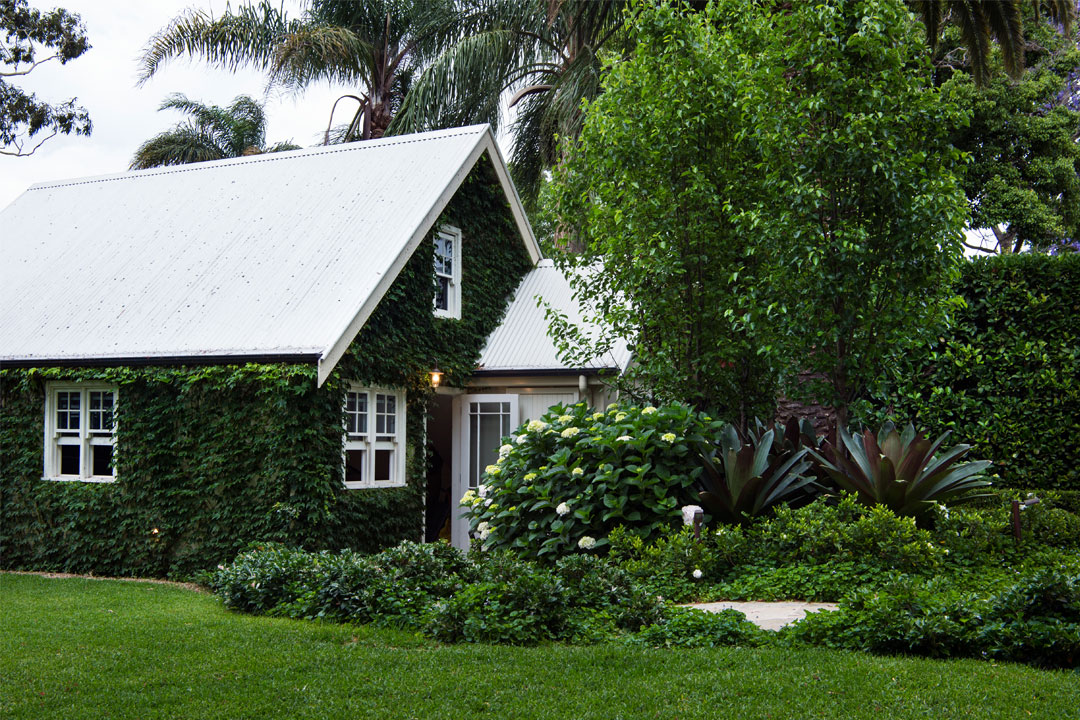
Our gardens are the portals through which we travel between life at home and the outer world, and therefore deserve a rigorous and mindful design treatment befitting their transitional function. For those of us fortunate enough to have secured a period property with a complexity of character that can only be procured with time, the task of establishing a contextually congruent outdoor space demands a design approach more nuanced and multilayered than that of a new build.
The opportunity to expand upon the charm and experience of a narrative-rich historic abode through its garden design is not squandered on GOODMANORS Pool + Garden, whose Hunters Hill project displays all the hallmarks of contemporary lifestyle- and site-driven design while remaining sympathetic to its heritage status. Here, lead landscape designer Tim Chaichana reveals how the project came to fruition, and how you can achieve a similarly mesmerising result.
DREAM TEAM
In the case of period homes, which are often both publicly and personally treasured, it’s of particular importance to be choosey about whom you recruit to produce a fitting garden design. “When looking for a designer or construction firm, ensure they have experience with heritage projects,” advises Chaichana, “as the space will need to be managed as a long-term investment.” Engaging a locally based firm with heritage experience and a client-centric philosophy will ensure your vision is faithfully and skilfully guided to execution, with any hiccups quickly resolved or used as the impetus for creativity in design.
“It’s important for us to work collaboratively with the client for the best possible result,” says Chaichana. “This way we can understand the goals for the space, which allows us to apply our design philosophy and make recommendations with which to achieve those goals.
As a design-and-construct firm that can manage all hard and softscaping, architectural elements, plumbing and lighting in a space, we can ensure every approved detail comes to life.”
When working with your team, don’t be shy about presenting any ideas or desires you may be mulling over, however broad or ambitious. As knowledgeable as a design practice may be, oftentimes the soul of a project is the result of homeowner input. Chaichana cites the client’s vision for the project as a rich source of inspiration for GOODMANORS Pool + Garden: “In many cases we find our clients are very passionate about their heritage home, and that enthusiasm lends itself to inspiration.”
NOW AND THEN
Planning a complementary garden for your period dwelling first requires some contemplation about your behaviours as a household, both day to day and on special occasions.
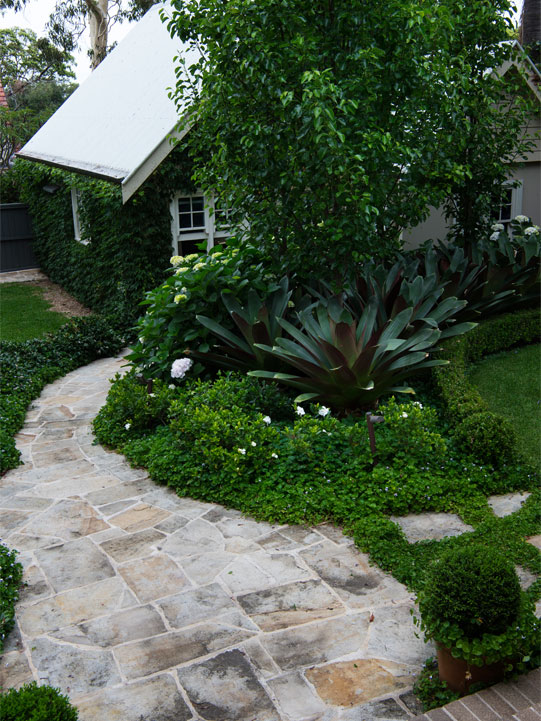
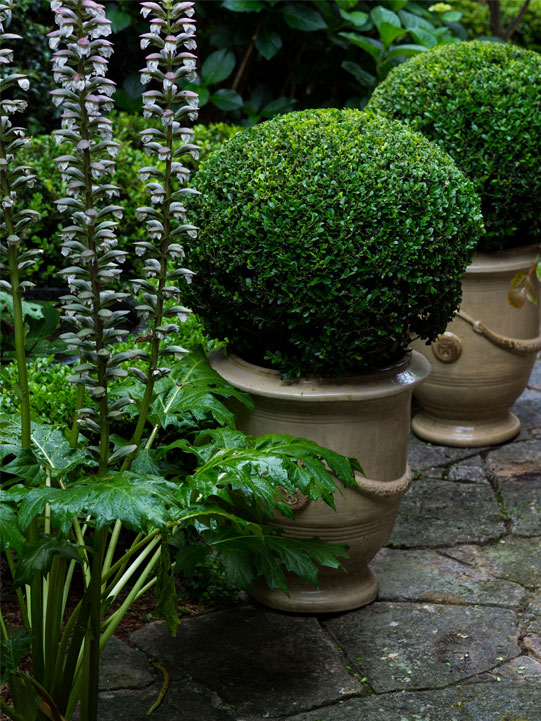
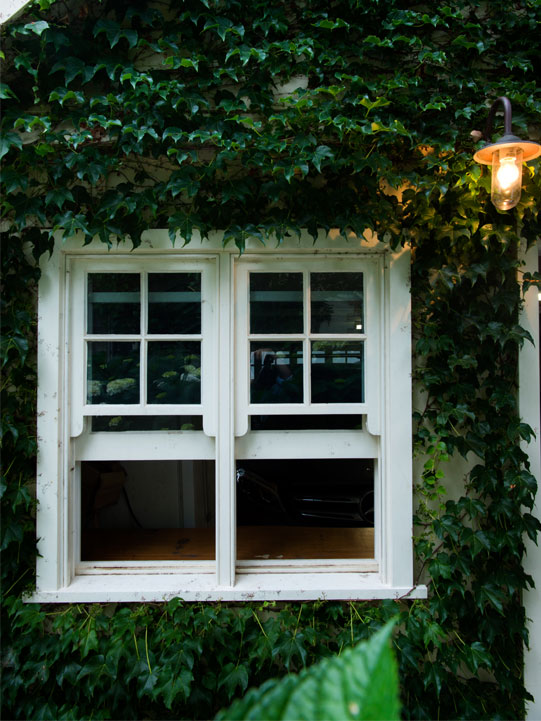
“Traditionally, houses did not extend into the outside space as is desired in these modern times,” observes Chaichana. Promoting an organic flow between your internal and external living spaces will encourage more use of your garden, and for homeowners who take pleasure in outdoor relaxation and entertaining, or parents who want to make outdoor play an enticing prospect for the kids, this is a desirable achievement.
“At our Hunters Hill project we needed to keep in mind that there had to be space for children and dogs to run around, while staying true to the architecture of the home,” says Chaichana. Striking a balance between liveability and contextual authenticity is no mean accomplishment, and establishing this equilibrium from stoop to street will not only bear rewards for the occupants, but also add significantly to the value of a home both in experiential and monetary respects.
“A careful consideration of the period of the home [is important],” says Chaichana. The aim is to curate an architecturally responsive planting palette that could be believed to have sprouted in tandem with original construction of the home, while ensuring the selected vegetation will materialise and remain easily manageable for occupants present and future.
“This doesn’t mean [creating a design that’s] outdated,” notes Chaichana, “instead it’s important to engage pillars of timeless design, including elegant structuring; strong focal points and statement details; the promotion a calm, inviting and warm atmosphere; and the incorporation of adaptable spaces that will evolve to meet changing lifestyle needs.”
HOUSE AND HOMAGE
Piecing together a well-rounded understanding of the history of your home and how this ought to influence your garden design will likely require some additional sleuthing. “Do your research locally,” advises Chaichana. “Speak to your neighbours about their experiences, and seek some inspiration online.” Being well-informed will allow you to better engage with the design process, as you’ll feel more confident in ensuring the site usage and plant selections complement the character of your home.
“At our Hunter’s Hill project, we used a lot of buxus hedging throughout,” says Chaichana, “decorative buxus balls, which are in keeping with the formal feel, create a pathed journey through different parts of the property. Additionally, flowering gardenia and hydrangea complement an existing jacaranda for a splash of colour.
For visual contrast, large alcantarea break up the layers of traditional leaves with large spikes, giving depth to the space.”
Taking visual cues from your home’s façade can assist in selecting suitable hardscaping materials, and can be especially effective when incorporated with a contemporary twist. “At our Hunter’s Hill project we used sandstone paving which mirrors a material used in the original and new construction of the home,” says Chaichana, “but we broke up the formality by applying it in a ‘crazy pave’ pattern.”
Vintage elements such as antique doors, mirrors, gates or sculptures that nod to the architecture of your heritage home will make your property’s innate mystery and aged appeal all the more palpable. “These you can find through auction houses, dealers in architecture salvage, and at markets,” says Chaichana.
A SITE TO BEHOLD
Beyond the conceptual and aesthetic challenges that come part and parcel with older homes, heritage renovations can encounter further hurdles in obtaining building approval due to the council’s vested interest in maintaining the historical integrity of the property.
Be mindful that “regulations will play a significant part in what you will and will not be able to do with your space”, says Chaichana. Provided you have engaged an experienced design firm, you will be able to rely on the team to guide you through the building application and approval process.
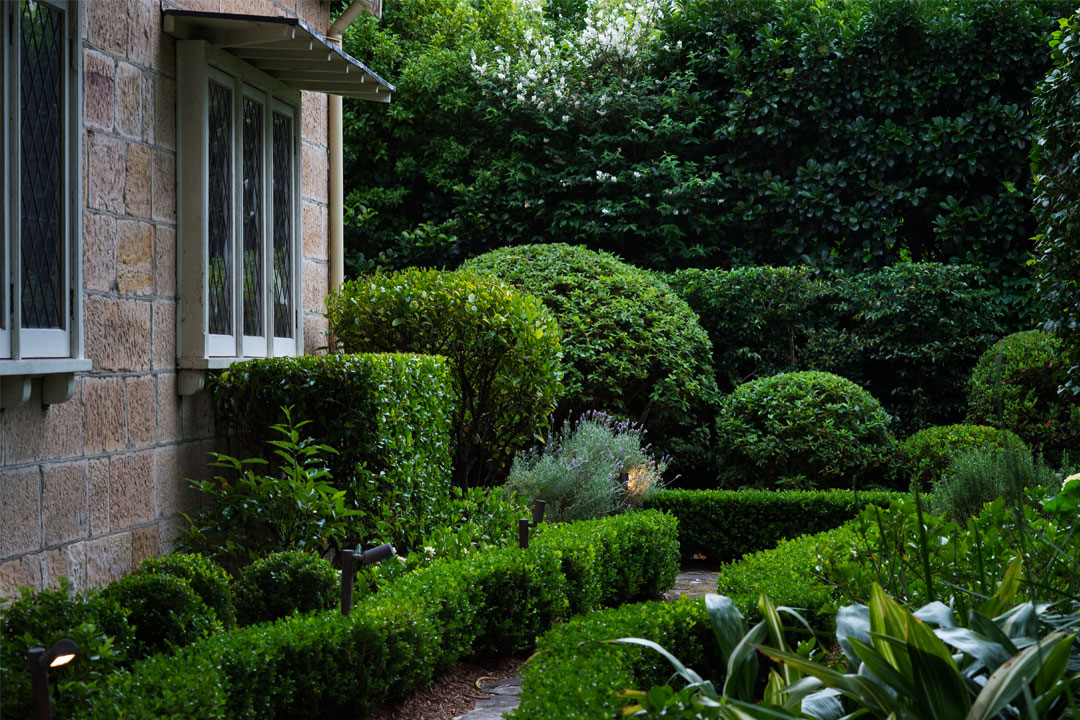
Historic or otherwise, your block will need to be thoroughly inspected before your project commences to gain a strong understanding of the requirements, possibilities and constraints that may impact your landscape design. “GOODMANORS Pool + Garden employs a creative plant spectrum that’s sympathetic to climate, light and soil quality where unsympathetic past plantings may have been unsuccessful,” says Chaichana.
“Sloping spaces can be utilised rather than levelled out to create practical zones within the space, such as entertainment decks, garden bedding or pool areas.” Where heritage features such as walls need to be preserved, devising a solution that will artfully incorporate the protected element into the design will promote intrigue and harmony in your space.
IN GOOD TIME
It is fortunate that heritage properties make ideal settings for the dense, verdant garden styles in which contemporary tastes have come to indulge. “Our eventual vision for the Hunters Hill project was for the space to be one that remains lush and almost wild as it grows, which we achieved through plant choice,” reflects Chaichana. “Colour, texture and contrast are all important factors in the planning process.”
Creating a space of enduring beauty requires an understanding that it may not immediately be the lush and full-grown vision that you have worked on with your design team. To ensure your green space realises its full potential over time, utilise your original plans as a touch-point for continual reference – this is where all the time and effort you invested in the initial stages of your project will pay dividends.
“Contact the team if you’re looking to develop the space in a different direction,” advises Chaichana. “[Ultimately], referring to your vision will keep you on track to getting the best result for yourself and the space.”
Images courtesy of GOODMANORS Pool+ Garden
